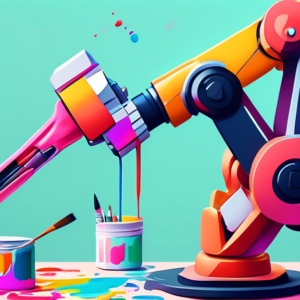TikTok’s Groundbreaking Move: Auto-Labeling AI-Generated Content
In a move that sets a precedent for responsible AI development, TikTok has announced the implementation of automatic labels for AI-generated content on its platform. This significant step aims to enhance transparency and empower users to distinguish between human-created and AI-generated content, fostering a more informed and responsible digital environment.
The Rise of AI-Generated Content and the Need for Transparency
The advent of artificial intelligence has revolutionized content creation, with AI models now capable of generating realistic images, videos, and even audio. While this technology opens up exciting creative possibilities, it also raises concerns about potential misuse, such as the spread of misinformation and deepfakes.
TikTok recognizes the importance of addressing these concerns and believes that transparency is crucial. By automatically labeling AI-generated content, the platform empowers users to make informed decisions about the content they consume and interact with. This move sets a new standard for responsible AI implementation in the social media landscape.
How TikTok’s Auto-Labeling System Works
TikTok’s auto-labeling system utilizes advanced algorithms to detect and identify content that has been generated or modified by AI. These algorithms are trained on vast datasets of both human-created and AI-generated content, allowing them to accurately distinguish between the two.
Once the system identifies AI-generated content, it automatically applies a label that clearly indicates its origin. This label will be visible to users, providing them with immediate awareness of the nature of the content they are viewing.
Benefits of Auto-Labeling for Users and Creators
The implementation of auto-labeling brings several benefits to both users and creators on TikTok:
For Users:
* **Enhanced Transparency:** Users gain a clear understanding of whether the content they are viewing is human-created or AI-generated, allowing them to make informed decisions about its credibility and authenticity.
* **Protection from Misinformation:** By identifying AI-generated content, users are better equipped to discern potentially misleading or manipulated information, reducing the risk of falling victim to deepfakes or other forms of AI-driven deception.
* **Informed Content Consumption:** Users can choose to engage with or avoid AI-generated content based on their preferences and level of comfort.
For Creators:
* **Clear Attribution:** Creators who utilize AI tools in their content creation process will have their work properly attributed, ensuring they receive credit for their contributions.
* **Experimentation and Innovation:** The labeling system encourages responsible experimentation with AI tools, allowing creators to explore new creative avenues while maintaining transparency with their audience.
* **Building Trust:** By being transparent about the use of AI, creators foster trust and authenticity with their audience, strengthening their connection with viewers.
Impact on the Social Media Landscape
TikTok’s pioneering approach to auto-labeling AI-generated content has the potential to significantly impact the social media landscape. It sets a new benchmark for responsible AI implementation and encourages other platforms to adopt similar measures. By promoting transparency and user empowerment, TikTok is contributing to a more informed and trustworthy digital environment.
The Future of AI and Social Media
As AI technology continues to evolve, its integration with social media platforms will become increasingly prevalent. TikTok’s auto-labeling initiative demonstrates a proactive approach to addressing the challenges and opportunities presented by AI. By prioritizing transparency and user education, social media platforms can harness the power of AI while mitigating potential risks and fostering a more responsible and engaging online experience for all.
